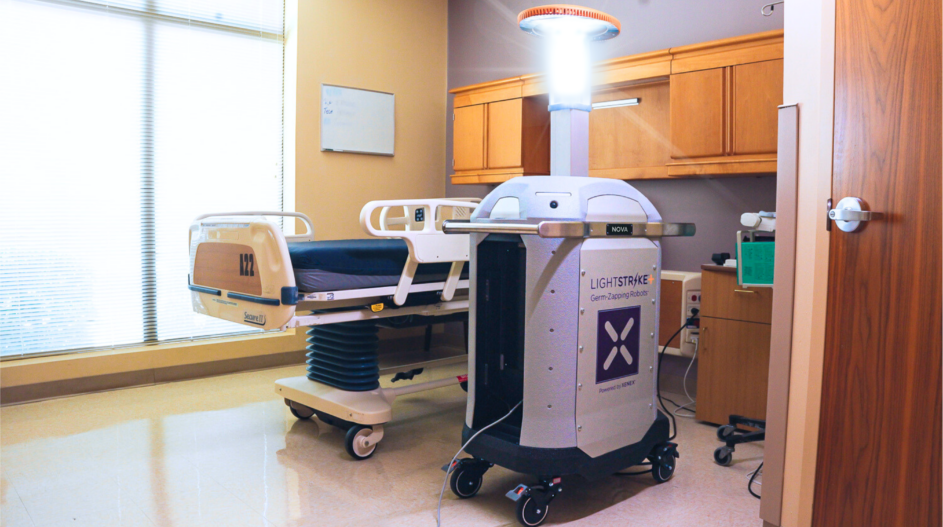As healthcare facilities look for effective ways to battle bacteria that can lurk on high-touch surfaces, Miller County Hospital has expanded its fleet of Germ-Zapping Robots to include the world’s first FDA authorized Germ-Zapping Robot – the LightStrike+. The hospital is the first facility in Georgia to invest in a LightStrike+ UV device, which is the only whole room microbial reduction medical device authorized by the FDA to be marketed and distributed in the United States. The LightStrike+ robot uses a xenon lamp to create high-intensity, pulsed broad-spectrum ultraviolet (UV) light that destroys pathogens on surfaces and helps break the chain of transmission from surfaces to patients and healthcare workers.
Miller County Hospital is an innovator among rural hospitals. The hospital has a fleet of powerful LightStrike robots that are used throughout the facility to quickly destroy pathogens that may have been missed during the manual cleaning process. With the world’s focus on preventing the spread of COVID-19 and other respiratory viruses, and recognizing that superbugs are becoming increasingly resistant to cleaning chemicals, antibiotics and even some hand sanitizers, Miller County Hospital is an advocate for technology that enhances their cleaning protocols. Microorganisms that can cause infections, such as Clostridium difficile (C. diff), methicillin-resistant Staphylococcus aureus (MRSA), and vancomycin-resistant Enterococci (VRE), often dwell on high-touch surfaces in healthcare facilities. According to the device manufacturer, Xenex Disinfection Services, the LightStrike+’s FDA authorization is supported by rigorous testing performed on over 10,000 samples of vegetative bacteria and Clostridiodes difficile (C.diff) spores.
“Miller County Hospital is committed to evidence-based care, patient safety and the best possible outcomes for our patients,” said Shawn Whittaker, CNO at Miller County Hospital. “When it comes to infection prevention, we have a comprehensive program in place that includes antibiotic stewardship, hand hygiene and education, to name just a few of our best practices. We added a LightStrike+ UV-C robot to our disinfection strategy because we want to ensure that we are doing everything we can to provide the cleanest possible environment for our patients and employees.”
LightStrike+ devices are intended to perform microbial reduction on non-critical medical device surfaces free from visual soiling in the healthcare environment following manual cleaning and disinfection practices. They are authorized for use in healthcare facilities, including unoccupied operating rooms, hospital rooms, and other clinical settings where non-critical medical devices may be present.
Operated by facility cleaning staff and nurses, the LightStrike+ robot is being used in a wide variety of rooms at Miller County Hospital including patient exam rooms, isolation rooms, restrooms, pharmacy, radiology, conference rooms, and much more. With as fast as a 2-minute cycle-time for microbial reduction, the LightStrike+ device is built upon accumulated knowledge from more than a decade of best practices implemented at healthcare facilities, 193 patents, and industry leading technical and epidemiological expertise.
About Xenex
Founded in 2008, Xenex is a world leader in UV technology-based microbial reduction strategies and solutions. Xenex is focused on developing, manufacturing and commercializing products and services that utilize its patented technologies to stop the spread of deadly pathogens that can cause infectious diseases. Many of the world’s leading hospitals, including HonorHealth, Mayo Clinic, MD Anderson Cancer Center, Ochsner Health System, Stanford Health Care, and Texas Health Resources, use LightStrike robots as part of their comprehensive disinfection strategy.. For more information, visit xenex.com.



